
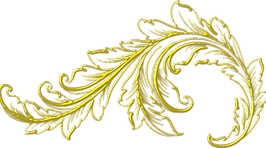


Monuments
GRAVE,AND, POPOVA-KONOVALOV
Popov (pseudo. Konovalov) Alexander Antonov (1877, Irkutsk — 17.1.1906, article Borzya Zab. region), revolutionary figure. Worked with Nar. teacher in Irkutsk lips. One of the organizers and hands. Irkutsk com. RSDLP. In 1903 arrested, convicted on 5 years, released 24.10.1905 on Manifesto from 17.10.1905. Was engaged in propaganda work in Chita and on Zab. well.d. Led a group of Bolsheviks at Manzhouli station. 9.1.1906 during the demonstration, he was beaten by soldiers. While in the hospital, he was captured arrived at the station. Manchuria Cossacks General PG Rennenkampf. Transferred to the Greyhounds shot. During the Civil war he was reburied, the grave was lost, found in 1988, the ashes were moved to a new place. His name is a street in Borz.
MASS GRAVE OF RED PARTISANS ON THE FORECOURT.
The entire highway from Chita to Manchuria from 1918 to 1920 was the scene of action, and sometimes the adventures of many iconic figures of the Civil war. Ataman G. M. Semenov and red army commander S. Lazo chose their headquarters Greyhounds, Tin, Baron Ungern has created a fiefdom in Dauria, Borzinsky district operated the red guards, partisans and Cossacks from the Tsagan-olua, Konduya Kurunzulay. 22 November 1920 at the station Borzya was played kravavaya battle during which the station was exempt from the "Semenov". In memory of the fallen in this battle in 1964 was a monument and an obelisk on a mass grave located in the Park near the station square.
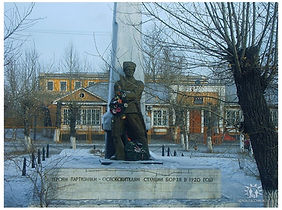
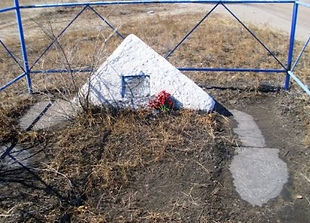

THE MONUMENT TO ALEXANDER MATROSOV.
In honor of the twentieth anniversary of victory, in 1965 in the city of Borzya was a monument to Alexander Matrosov. In 2016, during the repair work to prepare for the celebration of the 71st anniversary of the great Victory, the monument was destroyed by negligence.
According to the official version.
The monument to soldiers-brincam, who fought in the battles of the great Patriotic war, collapsed in the square the name of Matrosova in the city of borzja of Transbaikalian edge because of the wind and rotten inside design of the fittings.
THE AREA OF THE 6TH GUARDS TANK DIVISION.
May 9, 1975 on the street named after S. Lazo in connection with the 30th anniversary of the Victory was inaugurated a monument in honor of the 6th guards tank division. The is-3 tank was installed on a high pedestal. And a bas-relief with the path of military glory of the celebrated division. Now on this pedestal is a t-34 tank. It all began with the fact that in the summer of 2009 it became known about the liquidation of the exhibition site of the 36th army, and later about its transfer to Buryatia. by the decision of the Chairman of the city Council, and the entrance of trials the tank was arrested, and on April 9 it was already installed in the Park of ODOR, Chita. In borzja same in his place was installed a T-34 tank as more accurately reflecting the technique of 6-th guards division during the war.




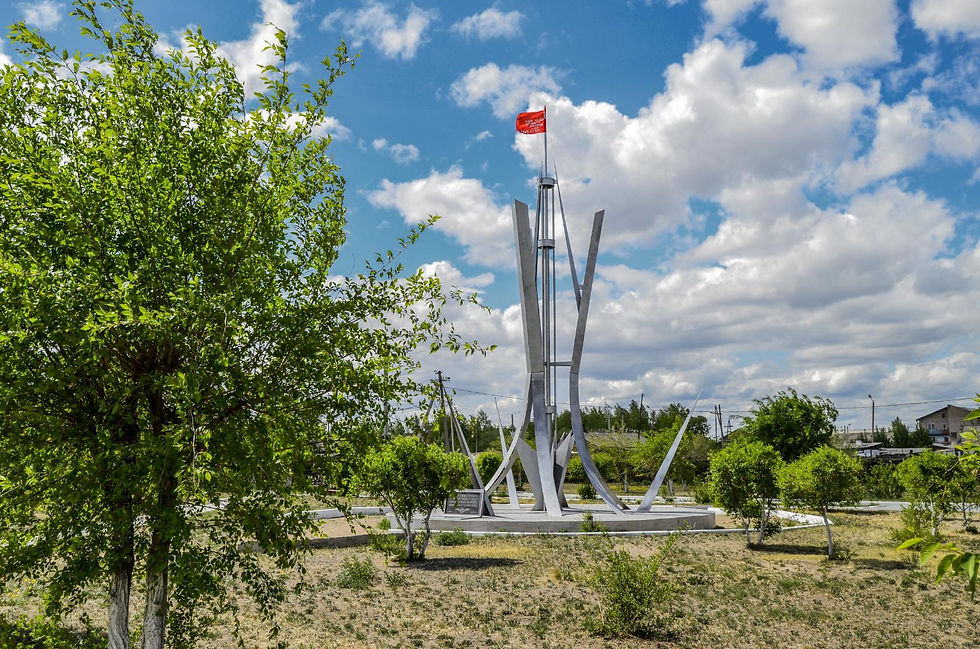
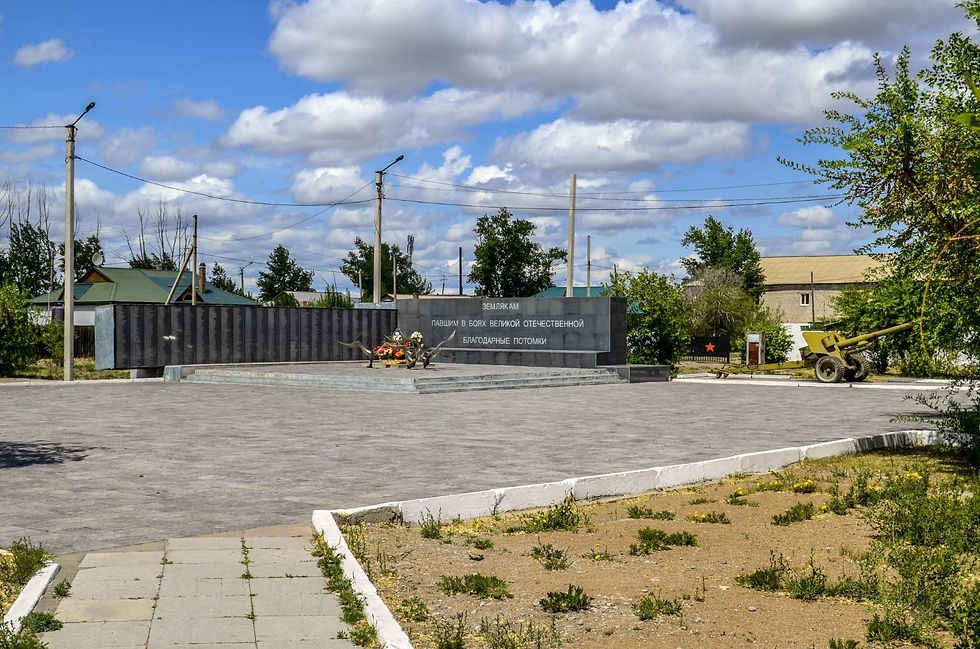

Memorial "Military glory".
"To fellow countrymen fallen in fights of the great Patriotic war Grateful descendants" - it is written on a memorial complex which opening took place on September 2, 1983. on memorial plates names of our fellow countrymen fallen on fronts of the great Patriotic war are carved. The flame of eternal flame does not allow our memory to cool down.
After a fire organized by vandals, the memorial complex was reconstructed in 2015. Installed metal installation topped with the banner of Victory, also in 2016 there was a gun.
PARAVOZ "CUCKOO". MONUMENT OF LABOUR GLORY OF RAILWAYMEN.
In the territory of Borzinsky depot there is a steam locomotive - monument. Surprising, around Transibo monuments locomotives – workers dozens, if not more. But it is the locomotive of the CP 4 - 459 for a narrow-gauge railway. In 1900 in Greyhounds came "the Great Siberian way" in the form of CEL. In the 30s, a narrow – gauge railway Sherlova – Solovyovsk was built, which was dismantled during the construction of the broad gauge road Borzya – Solovyovsk, to provide troops on Khalkhin-Gol.Our locomotive was produced from 1950 to 1957, that is, could be used on the branch Haranor-Priargunsk and its branches (Nickname).


A MONUMENT TO SOLDIERS OF THE 6TH GUARDS DIVISION.
On the pedestal in front of the house of officers in full growth figure of the tanker. On closer examination it becomes clear - this is a guards senior Lieutenant, commander of the order of the Patriotic war of 2 degrees, the order of Glory and two medals, I think the "For Courage" and "For military merit". Although the order of Glory was not awarded to officers, it can be assumed that our fighter received this award when he was a soldier or Sergeant.
"Mass grave of 44 soldiers who died from wounds in hospitals of Borzi in 1941-1945". Located near the main entrance to the city cemetery.


V. Shamsutdinov served at the far Eastern border Outpost. In March 1969, Chinese provocateurs violated the borders of our homeland. Vitali and his other comrades were transferred to the island after the battle on March 2, as the replenishment.
And here is a new Maoist attack on the island. On 15 March, the Outpost was up "In the gun!"In the midst of the battle to the rescue comrades rushed armored Vitaly Shamsutdinova. Vitaly saw in the dim rays of the sun the island of Damansky, fountains of the earth flying up in the sky. From direct hit of a shell the armored personnel carrier lit up. Pulling through the side hatch of the wounded, Shamsutdinov, along with other shoots from the advancing Chinese. When you try to pull out under fire, a wounded comrade Leonid Prosviryakova, Vitaly gets fatally wounded by unexploded mines.He gave his young life for his Homeland. Borinskie communicators ever enrolled him in the list of teams and perform for him daily the job change. The name of V. Shamsutdinova named one of the streets in the Linear part of the city, the school where he studied. September 1, 1988 in the school opened a monument to the hero-border guard.
AN OBELISK TO THE VICTIMS OF POLITICAL REPRESSION.
Institutions of the Gulag existed in Baley, Bukachacha, Mogocha, Nerchinsk, Borzya.
The book of Memory of victims of political repressions in Eastern Transbaikalia testifies to the scale of terror in the Chita region. In its eight volumes more than thirty six thousand inhabitants of the Chita region are named by name.
The monument was Erected in 2003, it is a stone monolith and a marble plaque at the foot of which the inscription "Victims of political repression."

.jpg)
AN OBELISK TO THE VICTIMS OF POLITICAL REPRESSION.
Institutions of the Gulag existed in Baley, Bukachacha, Mogocha, Nerchinsk, Borzya.
The book of Memory of victims of political repressions in Eastern Transbaikalia testifies to the scale of terror in the Chita region. In its eight volumes more than thirty six thousand inhabitants of the Chita region are named by name.
The monument was Erected in 2003, it is a stone monolith and a marble plaque at the foot of which the inscription "Victims of political repression."

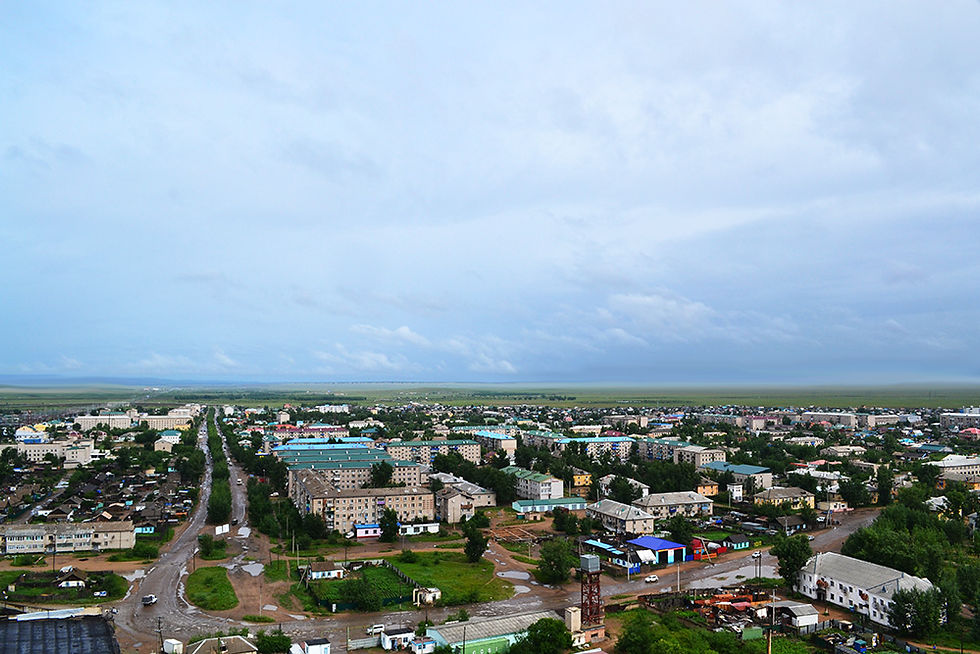

The settlement was founded in the XVIII century on the site of the Buryat nomads at the salt lakes, called, in the Buryat language "boora". From 1756 to borzinsky lakes have been producing industrial salt production, which was conducted for 180 years. In the speech of Russian settlers in the name of the village has changed somewhat, became pronounced Borzya.
In 1828 and 1834 years in borzja was the first poet of Transbaikalia F. I. Baldauf (1800-1839), pegasusi works on Borzinsky salt lake. Here in the summer of 1834 he wrote his main work, the romantic poem "Abba, Gyro".
A new stage in the development of the village is associated with the beginning of construction in 1899 of the TRANS — Baikal section of the TRANS-Siberian railway-the Kaydal branch. Here from all over the country went personnel workers from large industrial cities. Railway workers founded the village, the plan of which was made by the surveyor Lavrentyev. The opening of the village took place on may 9, 1900, on the day of the death of Generalissimo Suvorov, so the village was named "Suvorovsky", but it is not grafted on, and the village retained the name of the station. Since 1911, in Borz annually held fairs for the sale of leather, wool, meat, which attracts trade people from all over Transbaikalia and Mongolia. The post and Telegraph office, a set of shops and a market square, slaughterhouse worked. There were two schools — private and railway, there was a Church.
During the first Russian revolution of 1905-1907, railway workers of Borzie prepared an armed uprising. Save the document: "the verdict in the case of Sasukevich, Yasinsky and other organizers of the armed uprising on the station Borzya in Zabaykalsky well. D." in the sentence handwritten signature Punisher of General Rennenkampf, which States: "Sentence with respect to all of the defendants claim." Among the prisoners: sanitation foreman service road of K. M. Sasukevich, drivers: V. A. Erdmann, and I. I. Yasinsky, carpenter A. P. Korolev, clerk of K. K. Padalko, master depot, I. A., Shilko and head of area of Vladimir iconic.
In 1912-1913 he lived in borzja repair work Peter S. Parfenov, subsequently an active participant in the struggle against counter-revolution and intervention in Siberia and the far East. He finished his military way chief of the political Department of NADUR.
During the Civil war, the Parks were visited by leaders of the White movement Baron Ungern and the ataman G. M. Semenov. In may 1918, at the station of Borzya, Semenov announced himself as a representative of the cadet party and General I. Shil'nikov "by the Temporary Zabaykalsky government", thus beginning of the TRANS-Baikal state independence of Russia, which lasted until November 15, 1922. After the Civil war, in 1924, Borzya became a County, and since 1928 the district center, which subordinated to the territory of the current Alexander-Factory and TRANS-Baikal areas, later separated.Borzya is also associated with the name of the outstanding Soviet writer, who participated in her liberation in 1920.
In 1950, Borzya village was transformed into a city.
In Borz were born or lived:
Asatiani, Georgy Iraklievich (1914-1977) - documentary film Director, people's artist of the USSR (1967)
Sergachev, V. N. (1934-2013) — actor
Gvozdikova, Natalya Fyodorovna (b. 7 January 1948) - actress
Kuznetsov, Yury V. (b. August 24, 1946) is a Colonel of the airborne forces, hero of the Soviet Union.
Lysyuk, Sergey Ivanovich (b. July 25, 1954) — Colonel of the internal troops, hero of the Russian Federation.
Baron Ungern . Return of the legend.(excerpt from an article in the newspaper"Borzya-Vesti").
Author: Roman Litvintsev.
Revolutions. Riches. Secrets of the past.
"Ungern's gold was not stolen, but conquered, and is stored not in the Treasury, but underground or at the bottom of the river, as a treasure of the Nibelungs. It is the blood, and its luster brings death. Its location-a mystery, it appears suddenly, the Baron falls into a rage or wants to appease the monstrous Mongol gods, there is a reward for the head of the enemy, as the cause of someone's death, as a madcap in his generosity gift to any monastery" (L. Yuzefovich "Autocrat of the desert").
From an early age Baron Roman Fyodorovich Ungern-Sternberg dreamed of military exploits, but he was not lucky for a long time. By the time he dropped out of the last year of military school, got to the far East, the fighting against Japan has ended. However, the smell of gunpowder smoke in Mongolia, and the Baron rushed there. At the end of 1913, the Russian-Chinese agreement on the autonomy of Mongolia was signed, and the war did not take place. The Baron had already fallen into despair, but very soon a fire broke out in Europe. In 1917, the Baron was again in the East and continued to lead the life he dreamed of. Having fought for some time against the Bolsheviks under the command of ataman Semenov. Ungern went to "love" him Mongolia, which was held in Ulaanbaatar, and in 1920 he revived the Mongolian statehood. By the way in Communist Mongolia it was considered a shameful page of history. However, the glorious deeds of the humanist and friend of all the Mongols, and indeed the friend of all freedom-loving peoples ended in 1921. He was captured by the Chinese Bolsheviks who wanted to restore Chinese tyranny in Mongolia under the rule of Communist collaborators. The Baron was executed without due process, and his name was defiled. His distorted, unpleasant appearance has long been known in Russia, only by the work of the writer Konstantin Sedykh "Dauria". And then with them spread around the world the first rumors of countless treasures buried by the late Baron somewhere in the steppes between the Greyhound, Solovevsk – Ulan Bator. These rumors were under a very real basis. In the first place: the pantries of the two banks and the Chinese Frontier, troops plundered the bloody Baron in the capture of Urga. In addition, many remembered that in 1919 Semenov appointed Ungern as the chief Manager of works at all gold mines of the Nerchinsk mountain district and it is unlikely that the Baron performed this position carelessly. And still said that in Transbaikalia before going to Mongolia. But the main thing is that Kolchak sent to the East of the gold reserve of Russia, namely, two cars of gold — more than seventeen and a half tons to foreign banks did not get an ounce. Because at the station Borzya Baron together with his division arrested the composition, the local population supported him in every possible way and helped, because he knew that this gold belongs to the people, and Semenov and Kolchak planned to pay them with the Japanese for help in punitive operations against the peasants and Cossacks.And many borsini went to the army of Baron seeing the Semyonovsky tyranny and cruelty of ezdakov, so we called the Bolsheviks. Ungern, on the contrary, has always advocated order, for the people and for the free statehood and independence of the peoples of Transbaikalia from Japanese, Russian (Communists from Soviet Russia) and their henchmen and other oppressors. Unloading the gold on pack transport, the caravan moved to mount Osinovka, where there was a clash with the Hungarians, perhaps some of the gold was lost, but the rest was saved. Every year the rumors about the treasure grew and spread. First, if wealth was a four crates of gold, by the end of 20 years they turned in 24 boxes containing three and a half pounds only gold coins, in addition to other jewels, plus, it still belonged personally Ungaro full treasure chest, weighing seven pounds. Former officers of Ungern claimed to hide all this gold, leaving himself nor coin, it was quite in the spirit of their deceased leader. From the team of volunteers was formed afterlife guard detachment to protect the gold in the other world. Mysticism was close to the Baron. Treasures have always been associated with many mysteries. For example, it is believed that the treasure guarded by evil spirits, ghosts.




The coat of ARMS of the MUNICIPAL FORMATION of the City of BORZI AND BORZYA DISTRICT Chita REGION.

Coat of arms description
"In a divided inverted viloobraznym on lazurevy (blue, blue), green and black colors; silver standing on top of a crane with upraised wings, Golden legs and a raised gold open beak".
Substantiation of the symbolism of the coat of arms of Borzi and Borzinsky district.
The basis of the coat of arms of the town Borzya Borzya district and is based on the idea of a stylized image of the distinctive features of the area and geographic location. The viloobraznoe division of a Board means transport communications of the area with the adjacent States: Russia, China, Mongolia.
The image of birds in the coat of arms reflects the nature of the area, Daursky nature reserve.
The azure (blue, blue) color in heraldry is a symbol of honor, glory, devotion, truth, beauty, virtue. Here it is also the water resources of the area: Borzya river, Torey lakes.
The green color of the coat of arms symbolizes the nature of the area, agriculture, animal husbandry, crop production. Green is also a symbol of health.
Black-mining industry, coal, metals. Black color in heraldry symbolizes prudence, wisdom, modesty, honesty and eternity of life.
Silver (white) in heraldry is a symbol of simplicity, perfection, wisdom, nobility, peace and mutual cooperation.
Gold (yellow) in heraldry is a symbol of the highest value, greatness, strength, generosity. Yellow (Golden) - the color Borzya Cossacks.
Author's group:*
the idea of the coat of arms: Larisa Welz (Borzya), Konstantin Mochenov (Khimki);
artist: Robert malanitchev (Moscow);
computer design: Sergey Isaev (Moscow)
Approved by the decision Of the city Assembly of the municipality of Borzi and Borzinsky district
from 17.03.2000 № 59
It is entered in The state heraldic register of the Russian Federation under No. 648
THE PREVIOUS COAT OF ARMS.
The first coat of arms of Borzi was approved on April 29, 1988 by decision No. 213 of the Executive Committee of Borzinsky city Council of people's deputies.
The coat of arms had the following description: "on a silver background of a Board a circle — a symbol of the status of the city.In the center of the circle on a gold background shows a silver sheep-a symbol of the main and oldest trends in the economy of these places. The upper part of the circle is bordered by a white stripe, it means salt, which has long been the wealth of the borzino steppe. On it ear, despite the harsh conditions, here grow grain. In the lower part of a circle on a black background of a blade of the coal rotary excavator — the underground storeroom of the area. From circle depart 3 brown ray. It's a road sign. Borzya stands at the crossroads of the most important international routes from the USSR to Mongolia and China."
The author of the first coat of arms of Borzi — Anatoly Grigoryevich Kireev.
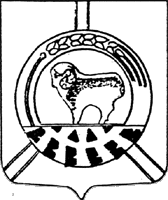
ИЗ ИСТОРИИ СТАНЦИИ БОРЗЯ. «Приговор относительно всех подсудимых утверждаю».
Холодной осенью 1905 года Забайкальская власть до этого момента прибывавшая в блаженной расхлябанности, распущенности и вседозволенности впервые лицом к лицу столкнулась с народными, массовыми протестами. Самостоятельно справиться с революцией и адекватно реагировать она оказалась неспособной. В авангарде Забайкальской революции итогом которой стало провозглашение первой в мире советской республики -Читинская республика, стояли такие населенные пункты как: Чита, Борзя, Верхнеудинск, Хилок.
Подавлять революцию пришлось возвращавшимся с проиграной по вине предателей русско-японской войны войскам генерала Павла Рененкампфа.
В 1906 году командовал специальным сводным отрядом (батальон пехоты с несколькими пулеметами), с которым, следуя на поезде из Харбина (Маньчжурия), восстановил сообщение Маньчжурской армии с Западной Сибирью, прерванное революционным движением в Восточной Сибири («Читинская республика»), разгромив силы мятежников в полосе железной дороги и наведя порядок в Чите.
На станции Борзя были осуждены на Нерченскую каторгу шесть человек. Из них пятеро приговорены к тюрьме общего режима. Однако наказание они отбывали на каторге. Среди них был машинист со станции Борзя польский дворянин Витольд Эрдман осужден к трем месяцам тюрьмы, за то, что в пьяном виде на вокзале выкрикивал оскорбление в адрес царя. Также среди осужденных оказались : санитарный десятник службы пути К.М. Зезюкевич, машинисты: И.И. Ясинский, столяр А.П. Королев, конторщик К.К. Падалко, мастер депо И.А. Шилко и начальник участка В.В. Окончиц. Ясинский раздавал рабочим локомотивного депо украденное оружие, призывая убивать представителей власти. Осужден к полутора годам Акатуйской тюрьмы. Мастер депо Шилко обвинен в захвате оружия у солдат и призывах уничтожить государственный строй России. Все эти железнодорожники после отбытия небольших сроков заключения продолжили активную борьбу с существующим строем в России. В частности столяр Королев был неоднократно пойман при попытках захвата оружия. Единственный кто получил действительно большой срок был борзинец фельдшер Зезюкевич. Он был главным агитатором, лично руководил захватом оружия. нападениями на представителей власти, руководил стачечным комитетом, создал боевую милицию ( вооруженные формирования революционеров). По воспоминаниям заядлой революционерки Ревеки Фиалки
во время отсидки в Акатуе сбежал оставив вместо себя на каторге своего брата. «приговор по делу Зезюкевича, Ясинского и других организаторов вооруженного восстания на ст. Борзя Забайкальской ж. д.» на приговоре собственноручная подпись карателя генерала Ренненкампфа, гласящая: «Приговор относительно всех подсудимых утверждаю».
Крестьянские восстания в Борзинском районе в 1930-х годах.ЗА СОВЕТСКУЮ ВЛАСТЬ БЕЗ КОММУНИСТОВ.
17 июня 1930 года в Борзинском и Чернышевском районах Читинской области вспыхнуло восстание. Сигналом к нему послужили сообщения о беспорядках в Жидкинском районе. Тогда же из ушедших в тайгу крестьян был сформирован отряд. Командиром выбрали Николая Литвинцева. Так как выступление заранее не готовили, поэтому повстанцы оказались безоружными. Эту проблему решили просто – ружья и винтовки отбирали у односельчан. Местных советский актив спешно начал создавать отряды самообороны, прекрасно зная о печальной судьбе своих коллег из других районов Читинской области. Именно эти отряды первыми вступили в бой с повстанцами. А потом им на помощь бойцы из 70-го Отдельного Дивизиона войск ОГПУ. Окончательно восстание было ликвидировано 24 июня 1930 года. Было арестовано 34 человека, еще двое погибли в бою с войсками ОГПУ. Одна из особенностей этого региона – беспомощность чекистов. В течение нескольких месяцев повстанцы регулярно встречались, обсуждали планы будущих выступлений, вербовали потенциальных участников, и местные чекисты ничего об этом не знали. Разумеется, были исключения, но все равно, не было предпринято никаких мер для нейтрализации противников советской власти. Если бы восстания в Читинской области носили не локальный, разрозненный и относительно немногочисленный характер и были разнесены по времени, а вспыхнули бы одновременно, то последствия для Москвы были бы катастрофические. Во-первых, находящиеся на территории соседнего Китая многочисленные белогвардейские формирования воспользовались бы моментом, и пришли на помощь повстанцем. Во-вторых, это бы спровоцировало массовые выступления на Украине и в центральной России. Фактически Красной Армии пришлось бы воевать с собственным народом. Сложно сказать, сколько бы красноармейцев нарушили присягу, и перешли на сторону восставших. В-третьих, не исключена вероятность внешней агрессии со стороны Японии, Польши, Франции, Англии или одной из стран Прибалтики. «В селе Передняя Бырка таким организующем лидером являлся Георгий Артемьевич Пляскин, в Хада-Булаке – Михаил Дмитриевич и Петр Прокопьевич Буторины. Помощником командира стал Петр Прокопьевич Буторин и командиром четвертого взвода стал Иван Филиппович Буторин. Буторин Михей Дмитриевич Родился в 1904 г., с. Хадабулак Акшинского уезда Забайкальской обл.; русский; Участник крестьянского восстания в Борзинском р-не. крестьянин-единоличник.. Проживал: с. Хадабулак Борзинского р-на ВСК.. Арестован 15 сентября 1930 г. Приговорен: Тройкой ПП ОГПУ по ВСК 9 ноября 1930 г., обв.: по ст. 58-2 УК РСФСР. Приговор: к 5 годам лишения свободы. Реабилитирован 2 апреля 1990 г. прокуратурой Читинской обл. ПЕРЕДНЕБЫРКИНСКОЕ КРЕСТЬЯНСКОЕ ВОССТАНИЕ в Борзинском р-не.
(17.6 – 23.7.1930). Зона действия – сс. Передняя Бырка, Хада-Булак, Чингильтуй. Причины: непосильное обложение индивидуальным налогом, принудительные хлебозаготовки, угроза выселения. Основной лозунг восставших «За чисто Сов. вл., против коммун, коммунистов и раскулачивания». Всего участников 61 чел., в основном середняки, бывш. красные партизаны. Рук. Н.Е.Литвинцев, П. П. Буторин, И.П.Филиппов, Г.А.Пляскин. Погибло 4 повстанца. Решением Тройки ПП ОГПУ ВСК от 9.11.1930 к ответственности привлечено 34 участника восстания.
ИСТОРИЯ БЫЛОЙ МОЩИ. БОРЗИНСКИЙ УКРЕПРАЙОН.
Укрепленные районы (УРы) начали строить еще в начале 30-х годов прошлого столетия. Основным мотивом для их строительства стала возрастающая напряженность на советско-китайской границе. Подтверждением тому стал военный конфликт между СССР и Китаем в 1929 году. Впоследствии в Забайкалье возвели два укрепленных района. Основными сооружениями их стали пулеметные ДОТы. Строительство УРов продолжалось вплоть до окончания Второй мировой войны. Приказом НКО № 3/27041 от 2 апреля 1932 г. на ОКДВА было возложено создание Забайкальского УР (он же Борзинский) (приказ войскам ОКДВА № 60/ 25 от 27 апреля 1932 г.) в составе Забайкальской группы войск ОКДВА. На основании приказа войскам ОКДВА № 90/32 от 10 апреля 1932 г. на ст. Борзя началось формирование управления начальника работ № 107 для строительства укрепрайона. Комендантом Забайкальского укрепленного района был назначен командир 40-й территориальной Красноярской стрелковой дивизии Сазонтов Андрей Яковлевич. В 1932 году создан Забайкальский УкрепРайон (УР). Первый период строительства.
К 1937 году построена первая линия укрепсооружений - всего около 200 ДОТ. В 1939 году принимается решение о строительстве новой линии укрепсооружений. Второй период строительства.
1.07.1941 года Забайкальский укрепленный район был переименован в Борзинский (№ 32) укрепленный район Забайкальского фронта. Новый укрепленный район получил наименование – Даурский (№ 31) укрепрайон. Комендантом Даурского Ура с октября 1940 года был назначен комбриг Викторов В.С., с 11.02.1942г. – генерал-майор. Новый виток развития УРы получили после трагических событий на о.Даманском в 1969 году. Всего в ходе боестолкновений советские войска потеряли убитыми и умершими от ран 58 человек (в том числе 4 офицера), ранеными 94 человек (в том числе 9 офицеров). Безвозвратные потери китайской стороны до сих пор являются закрытой информацией и составляют по разным оценкам от 100 до 300 человек. Среди погибших защитников родной земли был уроженец г.Борзя Виталий Шамсутдинов. (сейчас территория о. Даманский отдана Китаю. В 2005 году Китай получил ряд территорий общей площадью 337 квадратных километров. На месте гибели борзинца В. Шамсутдинова китайцы разместили музей славы китайских пограничников! В 1970 году пограничные с Китаем УРы комплектуются устаревшими танками ИС-2М и ИС-3. Обычно их просто вкапывали в землю и использовали как ДОТ. Официальный приказ МО РФ о снятии ИС-2М с вооружения был отдан только в 1995 г. Боевое дежурство на таких ДОТах было отменено.
Вооружение с танков сняли военные, а корпуса танков скоммуниздили местные жители и "предприниматели", распилили и по кускам продали в Китай. Последний остов танка "исчез" из окрестностей Забайкальска примерно в 2006 году. Вот такой бесславный конец.
ИСТОРИЯ ГРАЖДАНСКОЙ ВОЙНЫ В ЗАБАЙКАЛЬЕ. КРАСНЫЕ КОМАНДИРЫ ДЕЙСТВОВАВШИЕ НА ТЕРРИТОРИИ СОВРЕМЕННОГО БОРЗИНСКОГО РАЙОНА.
ВАСИЛЬЕВ Никита Ефремович (?9.1895, с. Камкай Заб. обл. — 14.11.1938), военный революционный деятель. Командир 7-го Заб. кавалерийского полка НРА (1920). Будучи мобилизованным в Белую армию, участвовал в восстании 15.7.1919 1-го казачьего полка Белой армии атамана Г. М. Семенова. Командовал сотней 5-го кавалерийского партизанского полка, помощник командира полка. С 1.8.1920, после преобразования партизанских отрядов служил в НРА ДВР. Впоследствии на хоз. работе. В 1930-е директор Борзинского мясокомбината. Арестован 22.12.1937 по так называемому «партизанскому» делу. Расстрелян. Реабилитирован в 1957. Лит.: Василевский В. И. Революция и Гражданская война в Заб.: Краткий биографический указатель. — Чита, 1989; Календарь знаменательных и памятных дат Чит. обл. на 1995 г. — Чита, 1995.
ДИМОВ Андрей Федорович (14.10.1886, с. Александровский Завод Заб. обл. — 23.9.1938, Чита), участник Гражданской войны. Конюх Акатуйской каторжной тюрьмы, младший конный милиционер Белой милиции. Затем красноармеец, командир «золотой сотни» 6-го кавалерийского полка (12.10.1919), командир 1-го кавалерийского полка (27.10.1920), командир 2-й Заб. кавалерийской бригады. В дальнейшем на сов. работе. Награжден орденом Боевого Красного Знамени. Член ВКП(б) с 1921 г. Работал в овцесовхозе, директор. Возглавлял отдел труда и соц. обеспечения. Работал в Нерчинском и Сретенском уездных управлениях. Нач. Чит. гор. милиции (июнь 1930 — сент. 1933). Арестован в 1937 по так называемому «партизанскому» делу. Расстрелян. Реабилитирован в 1957. И с т.: Архив РУ ФСБ РФ по Чит. обл., д.
МАТАФОНОВ Деомид Иванович (1879-1934).
Родился в 1879 г., с. Курунзулай Нерчинского уезда Забайкальской обл.; русский; Красный партизан. Работал в "Союзмясо", смотритель мациевской бойни.. Активный участник боев на Забайкальском фронте в 1918 году. Член Алтагачанской коммуны. Командир батареи, затем командир артиллерийского дивизиона на Восточно-Забайкальском фронте. После гражданской войны работал народным судьей. Проживал: ст. Борзя Борзинского р-на ВСК.. Арестован 11 ноября 1930 г. Приговорен: 26 ноября 1930 г., обв.: по ст. 58-10, 58-11 УК РСФСР. Приговор: дело прекращено Реабилитирован Сведений о реаб. не имеется.
МАТАФОНОВ Василий Иванович (1876—1933), революционный военный деятель. Участник революционного движения на ст. Борзя (1917), чл. Алтагачанской коммуны. Командир 1-го кавалерийского партизанского полка (1919), чл. Военно-революционного трибунала Вост.-Заб. фронта. Чл. Учредительного собрания ДВР.
ФАЛИЛЕЕВ Степан Наумович (1898, с. Нижне-Гирюнино Заб. обл. — ?), участник Гражданской войны. Эвенк. В апр. 1918 сформировал красногвардейский отряд в с. Нижне-Гирюнино и входил в Ложниковский военно-революционный штаб. С временным падением Сов. вл. на нелегальном положении. Вошел в состав Алтагачанского военно-революционного штаба (нояб. 1918) (см. Алтагачанская коммуна), позднее избран командиром 6-го кавалерийского полка. Чл. Учредительного собрания ДВР, обл. нар. собрания, участвовал в работе 3-й Заб. губ. партконференции.
ЯКИМОВ Макар Михайлович
(1891, с. Курунзулай Заб. обл. — 1938), военный деятель, комбриг (1935). Участник 1-й мировой войны, служил рядовым казаком в 1-м Верхнеудинском полку. Возвратившись в Заб., вступил в 1-й летучий отряд Красной гвардии, сражавшийся на Заб. фронте (1918). После временного падения Сов. вл. чл. Алтагачанской коммуны, организатор партизанского движения, командир 1-го кавалерийского полка, а затем сводного отряда, совершавшего рейды по тылам противника. На 2-м фронтовом съезде Вост.-Заб. фронта избран командиром 1-й дивизии (апр. 1920). Чл. Учредительного собрания ДВР и Заб. обл. Нар. собрания. В 1922 направлен в военную академию. Впоследствии продолжал службу в Красной Армии. Награжден орденами Красного Знамени (дважды). Репрессирован. Его именем названа улица в Борзе. Лит.: Ушаков М., Козлов И. Самородок // Годы и люди. — Чита, 1960; Шли дивизии вперед: НРА ДВР в освобождении Заб. (1920—1922): Сб. документов. — Иркутск, 1987. — Т. 3; Василевский В. И. Революция и Гражданская война в Заб.: Краткий биогр. указ. — Чита, 1989.




